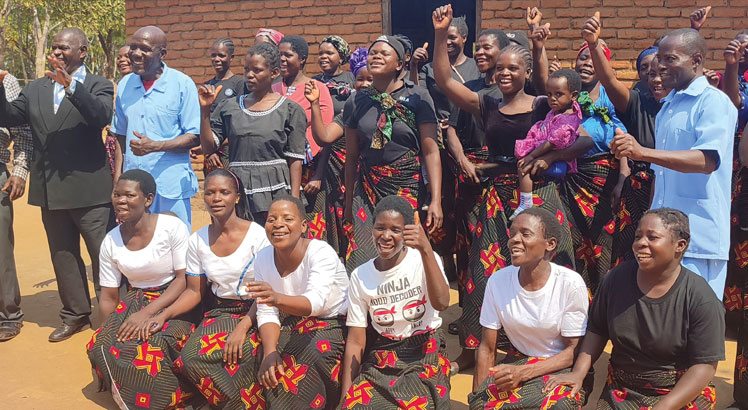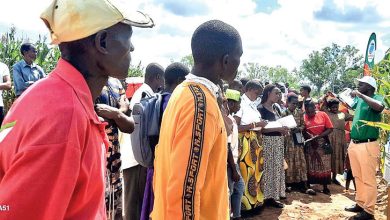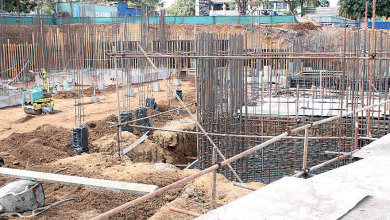Unsung champions of immunisation
It’s the last Wednesday of the month in Group Village Head (GVH) Kawalika, Traditional Authority Khongoni, Lilongwe District.
The day is dedicated to vaccinating babies in this hard-to-reach rural community. Mothers, their babies securely strapped to their backs, take a brief break from daily chores to ensure that their children receive lifesaving vaccines.
Some come from as far as Sayilesi, Maluwa, Kaferapanji, Chisachagwa and surrounding villages converge at Kawalika Under-Five Clinic which turns into a bustling hub of activity on a vaccine day such as this.
No mother with a baby in GVH Kawalika stays behind; it has become a community-wide commitment that every child must be vaccinated.

On arrival at the clinic, they are greeted by Edward Msyamboza, a disease control surveillance assistant from Malembo Health Centre, some six kilometres away from the clinic.
He has become a familiar face, not only in administering vaccines, but also weighing babies and monitoring their health.
Kawalika, Namikango, Mtsiliza and Mtandile are some of the shining examples of high vaccination coverage in Lilongwe.
For this reason, Lilongwe District Health Office (DHO) now boasts an impressive 95 percent immunisation rate, far surpassing the World Health Organisation’s (WHO) recommended 80 percent threshold. The key to this success? The Mother Care Groups (MCGs), a community-driven initiative by Malawi Health Equity Network (Mhen).
A community-driven solution
In 2019, Lilongwe’s immunisation coverage stood at just 79 percent, below the WHO’s recommended level.
It was a worrying statistic, but one that has since been dramatically improved, courtesy of the efforts of MCGs.
MCGs have emerged as unsung heroes in the battle to protect children from preventable diseases.
Lilongwe District Extended Immunisation Programme (EIP) coordinator Maclean Nkhoma praises the role MCGs play in boosting immunisation rates.
“In 2019, we were at 79 percent which was below the WHO’s recommended rate. Thanks to the efforts of MCGs, we have made significant progress,” he explains.
Nkhoma also attributes part of this progress to a heightened awareness brought by recent polio attack that hit some parts of the country.
“The resurgence of polio also made mothers more conscious of health risks and the need to vaccinate their children,” he adds.
This shows how personal experiences and perceived health threats can motivate health seeking behaviour. The heightened conscious about perceived health risk resonates with the Health Belief Model (HBM).
HBM, as explained by Paul Kingstone Mphepo, a social behavior change communication (SBCC) specialist at the Malawi University of Business and Applied Sciences, plays a crucial role in understanding the success of MCGs as advocated by Mhen.
The SBCC specialist agrees with Nkhoma that the fear of polio, coupled with efforts of MCGs, have driven many mothers to vaccinate their babies in the district.
“When mothers see vaccinated children remaining healthy and avoiding illness, they are bound to listen to messages being propagated by MCGs,” says Mphepo.
Tackling barriers
Kawalika MCG chairperson Judith Nowa recalls a time when vaccination coverage in her area was low due to the long distances mothers had to travel to reach under-five clinics at Malembo Health Centre, five kilometres away from Kawalika Village.
“Mothers would get discouraged because the health centre was too far,” she says.
To address this, they began advocating for more accessible healthcare services.
Nowa and her group used their advocacy skills to lobby GVH Kawalika and community members to allocate land and support the construction of a shelter at Kawalika now being used as an underfive clinic. And, their efforts paid off.
“Now, with Kawalika Underfive Clinic in closer proximity, vaccination numbers have skyrocketed,” she says proudly.
Namikango, Mtsiriza and Mtandile MCGs also share a similar story.
Namikango MCG secretary Mphatso Lesitala testifies that opening a clinic in her area boosted immunisation rates.
“In 2019, we only had an underfive clinic at Malembo Health Centre about 20 babies in a month from this area used to get vaccines. Today, the number has increased to 120 in a month,” she explains.
Even at Mtsiriza and Mtandile, the impact of the MCG has been profound that, according to Nkhoma, they have become an integral part of the district’s healthcare system.
The district now has 32 active MCGs, each consisting of about 30 women from 30 different villages.
MCGs have become essential in increasing vaccination rates, educating communities about vaccines and their benefits as well as fostering trust in healthcare services.
Changing norms, saving lives
Kawalika MCG is a prime example of how these groups are transforming healthcare norms in hard-to-reach areas of the country.
Since the group’s formation in 2019, the number of vaccinated children has quadrupled, rising from just 50 to over 200 today.
Kawalika MCG secretary Loveness Simati believes the group’s success stems not only from conducting defaulter tracing, sensitisation and advocacy meetings, but also from the strict by-laws they have implemented.
Simati explains: “We introduced by-laws that require every mother to vaccinate her child. Those who do not are served last when they go to the hospital to seek treatment. This may sound harsh, but it works. No one stays home with an unvaccinated baby.”
This shift in community norms has been key to Kawalika’s success and the results are evident.
Health workers like Edigar Kadzakalowa, a senior disease surveillance assistant at Malembo Health Centre, have also noticed a significant change in health-seeking behaviour.
“In the past, many people did not prioritise healthcare, but thanks to the MCGs, more mothers are taking their children for vaccinations,” he observes.
A broader vision
MCG initiative is part of a larger, more ambitious project—the Gavi Health Systems and Immunisation Strengthening (HSIS) Project.
Funded by Gavi, the Vaccine Alliance, and implemented by Mhen in collaboration with the Ministry of Health, the project aims to strengthen the country’s healthcare system and improve access to immunisation services.
The project seeks to eliminate barriers to healthcare by focusing on populations that are often missed due to geographical, socioeconomic and cultural factors.
HSIS project’s success aligns with Malawi’s efforts to achieve the Sustainable Development Goals (SDGs), particularly SDG 3, which aims to ensure healthy lives and promote well-being for all.





